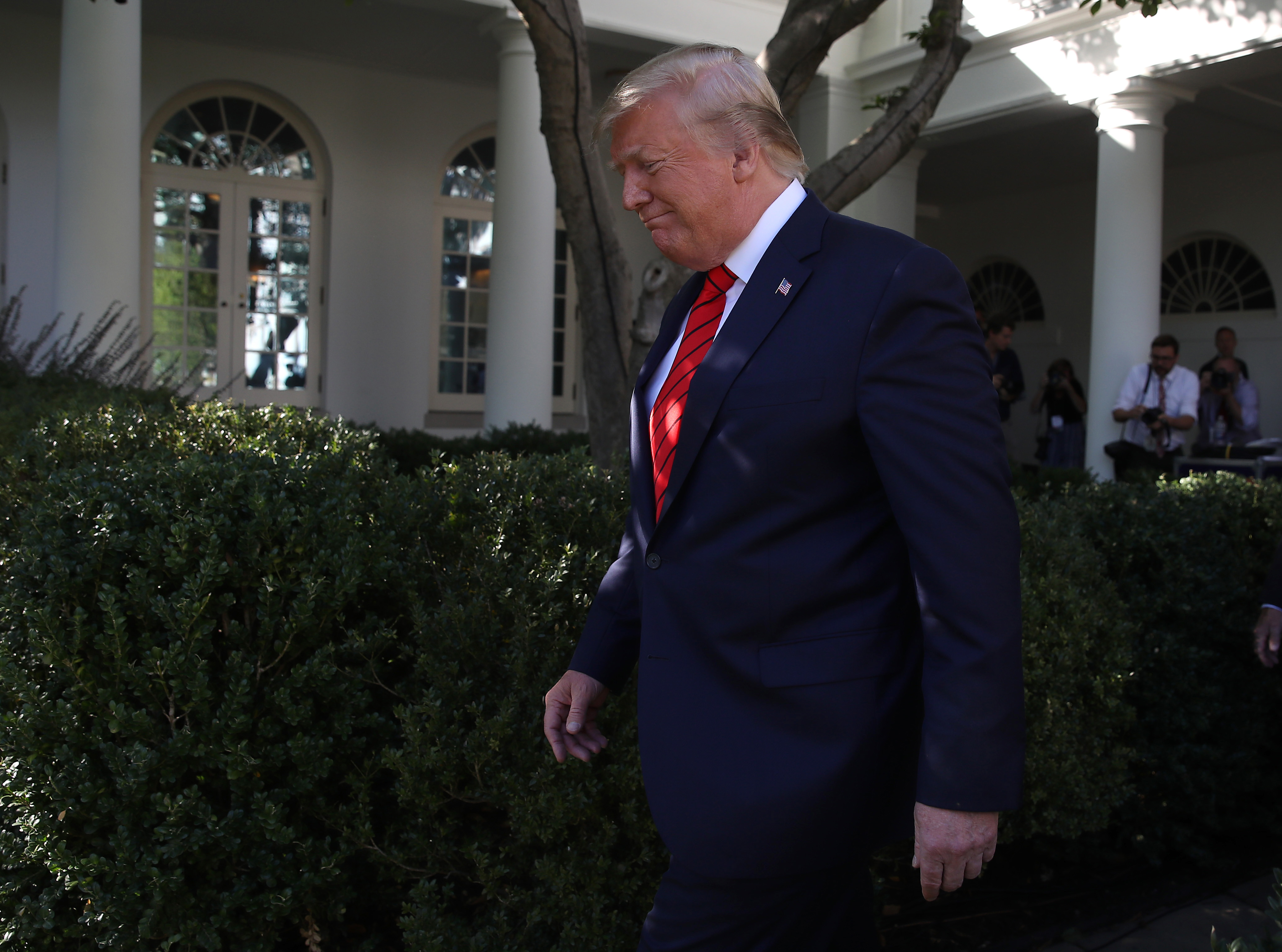 U.S. President Donald Trump walks into the Rose Garden for an event to honor the 2019 Stanley Cup Champions, St. Louis Blues in the Rose Garden at the White House on October 15, 2019 in Washington, DC. (Photo by Mark Wilson/Getty Images)
U.S. President Donald Trump walks into the Rose Garden for an event to honor the 2019 Stanley Cup Champions, St. Louis Blues in the Rose Garden at the White House on October 15, 2019 in Washington, DC. (Photo by Mark Wilson/Getty Images) Mark Twain told a story about the cat who sat on a hot stove: “That cat won’t ever sit on a hot stove again,” Twain said. “But he’ll never sit on a cold stove again either.”
For the cat writing this column, the 2020 election is the political version of a cold stove.
Four years ago, almost everyone knew Hillary Clinton would be elected president. Every conventional polling metric showed her winning decisively, and even when the polls narrowed in the final weeks of that campaign, it was difficult to find a mainstream analyst who gave Donald Trump even a small chance of pulling off a historic upset.
But the problem with conventional metrics is they can’t account for unconventional candidates. Trump rejected almost every traditional approach to political campaigning by ignoring the political center in favor of an effort that mobilized a largely overlooked segment of white working-class voters. As recently as this past winter, it was still an open question as to whether their affection and enthusiasm could carry him to re-election over a restive and divided opposition.
Then the pandemic hit. Voters have harshly judged Trump’s handling of the COVID-19 crisis — most notably two key voter groups that were instrumental to his election four years ago. Older voters, who have supported Republican candidates by large margins for 20 years, have been disproportionately affected by the coronavirus and have moved decisively toward Joe Biden. As the coronavirus spread from coastal urban areas into small towns and rural communities, working-class women who supported Trump over Clinton in large numbers also are shifting to Biden. Some national polls show Biden with leads as large as 15 points, and his margins in key swing states are growing.
But while Clinton’s lead was not as large in the summer of 2016 as that which Biden now enjoys, partisans on both sides are reluctant to leap to conclusions about this November’s outcome. Trump’s ill-fated gamble to push for a faster reopening of U.S. cities backfired, and the likelihood of significant medical or economic improvements before the election looks much less likely. The national debate over race relations that has erupted since the death of George Floyd has hurt the president, too, as his combative approach to a discussion that requires conciliation has hardened the opposition to his candidacy among suburbanites and other swing voters.
And yet …
Trump’s strong emphasis on law and order and public safety since Floyd’s death is targeted directly at those older voters and working-class women whose support he has lost over the pandemic. “Tough on crime” messaging has been a reliable standby for candidates of both parties for years, and the president’s advisers know these two voter groups especially are susceptible to such appeals. Trump has hammered these issues relentlessly for the past two months, and his recent deployment of federal law enforcement to Portland, Chicago and other cities is reinforced by his re-election campaign’s decision to highlight violent crime in its television advertising.
In the past, the criminal-justice discussion has appealed to voters in the political center, who now seem less interested in these topics than their parents were in the late 20th century. But Trump did not win in 2016 by appealing to swing voters but by exciting an aggrieved conservative base using issues such as trade, immigration and other unilateralist sentiments. Biden himself has been careful to avoid extreme positions on police reform and other law enforcement questions, but more passionate members of the Democratic base are calling for more dramatic changes.
Trump understands his upward path toward re-election largely depends on his ability to tie Biden to those more intense Democratic voices, and likely will attempt to link Biden to the violence that has accompanied some demonstrations in Portland and other cities. While Biden’s low-key approach to campaigning during the pandemic has helped him build a lead in the polls while Trump repeatedly has damaged his own prospects, it also has left Biden somewhat undefined in the eyes of voters. Trump’s team knows that defining Biden on its terms and turning the campaign into a crime-based choice is its last, best shot.
Dan Schnur teaches political communications at UC Berkeley, USC and Pepperdine.






















 More news and opinions than at a Shabbat dinner, right in your inbox.
More news and opinions than at a Shabbat dinner, right in your inbox.